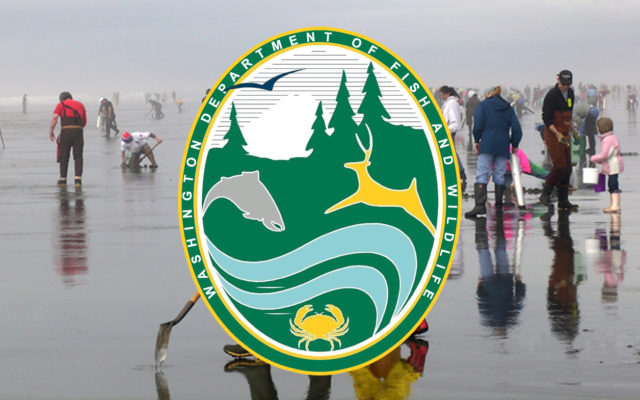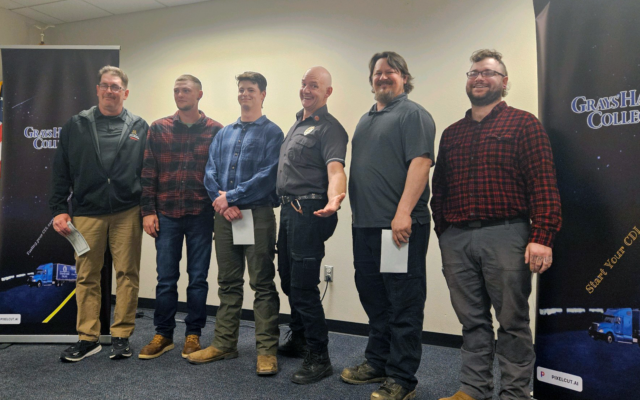8-day razor clam dig approved, starting Nov. 3

Shellfish managers with the Washington Department of Fish and Wildlife (WDFW) have approved the next round of razor clam digs on the Washington coast, with the first digs kicking off Wednesday, Nov. 3.
The opening comes after officials with the Washington Department of Health determined that marine toxin levels remain low, and the clams continue to be safe for human consumption.
WDFW shellfish managers estimate that so far this season, diggers have harvested an estimated 2.3 million clams during 126,250 digger trips.
Dan Ayres, coastal shellfish manager with WDFW, noted that diggers should be aware of which beaches are open or closed on the days they intend to dig. Typically, only Copalis Beach or Mocrocks Beach is open on a given day, with the other beach closed.
“We’ve had some confusion with people thinking that all these beaches are open for every dig, but that isn’t the case,” Ayres said. “If you plan to visit Copalis or Mocrocks, be sure your intended destination is open on the day you want to dig.”
See the list below for information on which beaches are open each day.
“Overall, it’s been a very successful season so far, and we hope it continues throughout 2021,” Ayres said. “These digs help bring millions of dollars into coastal communities, and offer people a fun, healthy way to get outdoors with a low barrier to entry.”
Following local safety guidelines can help keep it fun and healthy as COVID remains a concern across Washington, and managers continue to urge diggers to be respectful of local residents and communities.
The following digs were approved, along with the low tides and beaches:
- Nov. 3, Wednesday, 6:16 P.M.; -0.3 feet; Long Beach, Twin Harbors, Mocrocks
- Nov. 4, Thursday, 7:01 P.M.; -1.1 feet; Long Beach, Twin Harbors, Copalis
- Nov. 5, Friday, 7:46 P.M.; -1.6 feet; Long Beach, Twin Harbors, Mocrocks
- Nov. 6, Saturday, 8:33 P.M.; -1.8 feet; Long Beach, Twin Harbors, Copalis
- Nov. 7, Sunday, 8:23 P.M.; -1.6 feet; Long Beach, Twin Harbors, Mocrocks
- Nov. 8, Monday, 9:16 P.M.; -1.2 feet; Long Beach, Twin Harbors, Copalis
- Nov. 9, Tuesday, 10:13 P.M.; -0.6 feet; Long Beach, Twin Harbors, Mocrocks
- Nov. 10, Wednesday, 11:16 P.M.; 0.0 feet; Long Beach, Twin Harbors, Mocrocks, Copalis
Most successful digging occurs between one and two hours before the listed time of low tide. No digging is allowed before noon during digs when low tide occurs in the afternoon or evening.
All open beaches (Long Beach, Twin Harbors, Mocrocks, and Copalis) have increased limits through the end of 2021, with diggers allowed to keep 20 clams instead of the usual 15. Each digger’s clams must be kept in a separate container, and all diggers must keep the first 20 clams they dig, regardless of size or condition.
WDFW has tentatively scheduled additional digging dates later in 2021 – details can be found at wdfw.wa.gov/fishing/shellfishing-regulations/razor-clams. All tentative dates are dependent on final marine toxin testing, which usually occurs about a week or less prior to each set of openings. WDFW will announce additional dates in 2022 in mid-December after reviewing harvest levels and projections.
All diggers age 15 or older must have an applicable fishing license to harvest razor clams on any beach.
Licenses, ranging from a three-day razor clam license to an annual combination fishing license, are available from WDFW’s licensing website at fishhunt.dfw.wa.gov/login, and from hundreds of license vendors around the state. WDFW recommends buying your license before visiting coastal beach communities for this razor clam season.
To learn more about razor clam abundance, population densities at various beaches, and how seasons are set, visit wdfw.wa.gov/fishing/shellfishing-regulations/razor-clams#management.
The Washington Department of Fish and Wildlife works to preserve, protect, and perpetuate fish, wildlife and ecosystems while providing sustainable fish, wildlife, and recreational and commercial opportunities.



